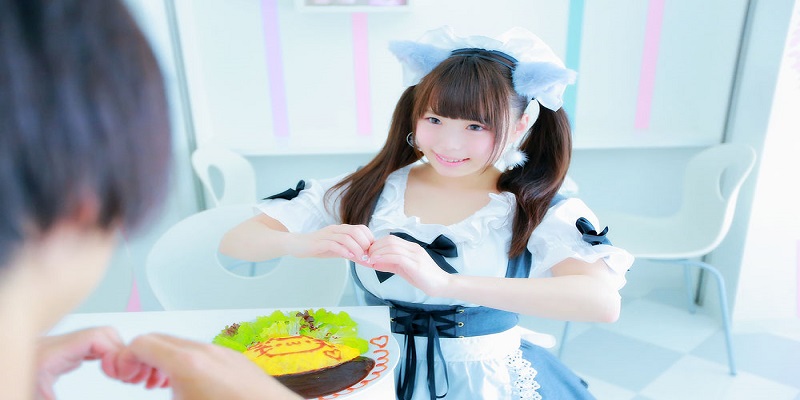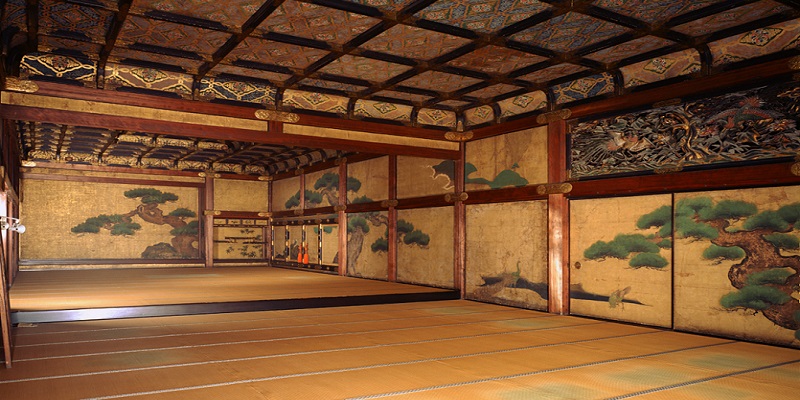Nijo-jo Castle, the World Heritage, is known as one of the representing construction of Kyoto, and is also known that it is built with a gap from the surrounding area.
Why it is such a structure?
Let me solve and clear such a mystery.
Contents
Nijo-jo Castle was Built Leanging 3 Degrees

Nijo-jo Castle is located in the center of Kyoto city streets, and there are many things to see as the World Cultural Heritage.
It is the one of the best sightseeing spots in the city where many tourists always visit.
As a head of Kano school, Tanyu Kano, as young as 24 years old, painted the fusumae (a painting on the paper sliding door) of Ninomaru Palace, which are gorgeous and very overwhelming.
A garden created by Enshu Kobori, who was a tea master and a garden creator in early Edo Period, overwhelms the people who view, and it conveys the great power of Tokugawa Shogunate.
With appealing power of Ieyasu Tokugawa, Nijo-jo Castle was built in 1602, by general mobilization of daimyo (feudal lord) of each region.
Kano school, a group of painters dedicated to Shogunate, draw paintings, Enshu Kobori, a garden creator representing at that time, created a garden, and daimyo submitted high quality stones of each region, so it was the perfect castle.
But, the axis of Nijo-jo Castle is for some reason, leaning by about 3 degrees to east against a road running south to north.
You can clearly see such a structure by looking at a map.
At more than 700 years before Nijo-jo Castle built, the Capital of Heiankyo was created by Emperor Kanmu.
At that time, streets were designed in a grid with the direction decided with the north Star.
Roads running vertically are designed in parallel against the axis of south to north.
In 1602, when Ieyasu built Nijo-jo Castle, Christianity introduced in Japan, and it was the period when the latest technology of Renaissance entered with a missionary.
“Two Norths” that Caused 3 Degrees

Became a ruler as a successor of Hideyoshi Toyotomi, Ieyasu employed the latest technology at that time for building of Nijo-jo Castle as if showing off the power.
And, when building Nijo-jo Castle, he used a compass (azimuth magnet), which westerns brought in, for measuring.
This caused the reason for deviation.
Nijo-jo Castle leans by three degrees to east against Horikawa -dori street that runs south to north at the east side of moat.
The direction of the north star is true north, but the north pointed by an azimuth magnet is said as the magnetic north.
The magnetic north changes by time, and in around 1600 it is said that it was deviated by three degrees to east against the true north.
It seems that it now leans seven degrees to west against the true north.
The difference of the true north, which is the direction of the north star, and the magnetic north, which is pointed by a compass, is called as an angle of deviation.

Let’s Check the 3 Degrees by Visiting Nijo-jo Castle


During the Edo Period, they did not yet noticed that there are two kinds of north.
Ieyasu might have thought that since he used the latest technology for measuring, the roads running south to north designed in early Heian were deviated.
Please try checking at a map!
And, please actually go there, see, and confirm it.










![11 Maid Cafe Ranking in Tokyo [Recommended even to beginners and ladies!]](https://jatrabridge.com/wp-content/uploads/slider/cache/11597c33ae53b47eb36a2f67968e635f/Maid-Cafe-Ranking-in-Tokyo2.3.jpg)























